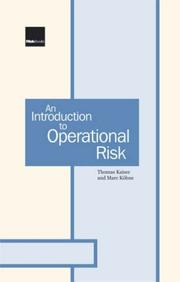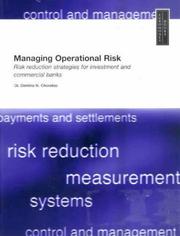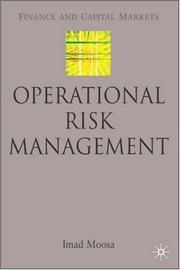| Listing 1 - 10 of 183 | << page >> |
Sort by
|
Book
Year: 2020 Publisher: Washington, D.C. : International Monetary Fund,
Abstract | Keywords | Export | Availability | Bookmark
 Loading...
Loading...Choose an application
- Reference Manager
- EndNote
- RefWorks (Direct export to RefWorks)
This note presents a targeted review of selected aspects in the regulation and supervision of banks in Norway. The review is carried out as part of the 2020 Norway Financial Sector Assessment Program (FSAP) and the findings and recommendations are based on the regulatory framework in place and the supervisory practices employed at end-October 2019. The note focuses on the powers and responsibilities, independence, and resourcing of Finanstilsynet (FSA); its supervisory approach and enforcement powers and practices; key aspects of the prudential framework; and mechanisms to prevent abuse of financial services.
Book
Year: 2020 Publisher: Washington, D.C. : International Monetary Fund,
Abstract | Keywords | Export | Availability | Bookmark
 Loading...
Loading...Choose an application
- Reference Manager
- EndNote
- RefWorks (Direct export to RefWorks)
This technical note leverages on the 2015 FSAP which concluded that the United States (U.S.) had a high degree of compliance with the Basel Core Principles (BCPs). The FSAP reviewed the progress achieved in addressing the main weaknesses previously identified and the main supervisory and regulatory developments since then. The key focus are the steps taken by the U.S. authorities in recent years to recalibrate and further tailor the banking regulatory and supervisory framework and the role of stress tests in the supervision process. The FSAP team has not covered the impact of COVID-19 outbreak on banks supervision and has not discussed with authorities the related policy response. The FSAP recommendations are meant to be considered once the impact of the pandemic on the economy and the banking sector becomes clearer.

ISBN: 1904339514 Year: 2006 Publisher: London Risk Publications
Abstract | Keywords | Export | Availability | Bookmark
 Loading...
Loading...Choose an application
- Reference Manager
- EndNote
- RefWorks (Direct export to RefWorks)
Book
ISBN: 9781904339878 Year: 2007 Publisher: London Risk Publications
Abstract | Keywords | Export | Availability | Bookmark
 Loading...
Loading...Choose an application
- Reference Manager
- EndNote
- RefWorks (Direct export to RefWorks)
Book
ISBN: 1118573005 1118573013 1118573021 Year: 2015 Publisher: Hoboken, New Jersey : Wiley,
Abstract | Keywords | Export | Availability | Bookmark
 Loading...
Loading...Choose an application
- Reference Manager
- EndNote
- RefWorks (Direct export to RefWorks)
"Co-edited by acknowledged experts in the quantification of operational risk, Handbook of Operational Risk conveniently and systematically displays all of the financial engineering topics, theories, applications, and current statistical methodologies that are intrinsic to the subject matter. This one-stop guide for financial engineers, quantitative analysts, and risk managers places under one cover all of the necessary theory, applications, and models that are inherent in any discussion of the subject. The authors emphasize the importance of collecting high-quality data based upon understanding the problems that impede the gathering process"-- "Systematically displays all of the financial engineering topics, theories, applications, and current statistical methodologies that are intrinsic to the quantification of operational risk"--
Book
ISBN: 1118909542 1118909569 Year: 2015 Publisher: Hoboken, New Jersey : Wiley,
Abstract | Keywords | Export | Availability | Bookmark
 Loading...
Loading...Choose an application
- Reference Manager
- EndNote
- RefWorks (Direct export to RefWorks)
A cutting-edge guide for the theories, applications, and statistical methodologies essential to heavy tailed risk modeling Focusing on the quantitative aspects of heavy tailed loss processes in operational risk and relevant insurance analytics, Advances in Heavy Tailed Risk Modeling: A Handbook of Operational Risk presents comprehensive coverage of the latest research on the theories and applications in risk measurement and modeling techniques. Featuring a unique balance of mathematical and statistical perspectives, the handbook begins by introducing the motivation for heavy tailed risk pro
Book
ISBN: 9780471780519 Year: 2007 Publisher: Hoboken Wiley & Sons
Abstract | Keywords | Export | Availability | Bookmark
 Loading...
Loading...Choose an application
- Reference Manager
- EndNote
- RefWorks (Direct export to RefWorks)

ISBN: 1855648911 Year: 2001 Publisher: London Euromoney
Abstract | Keywords | Export | Availability | Bookmark
 Loading...
Loading...Choose an application
- Reference Manager
- EndNote
- RefWorks (Direct export to RefWorks)
Financial institutions --- Operational risk --- Risk management --- Investments
Book
ISBN: 9781119841371 1119841364 1119841380 1119841372 9781119841364 9781119841388 Year: 2022 Publisher: Hoboken, New Jersey : John Wiley & Sons, Inc.,
Abstract | Keywords | Export | Availability | Bookmark
 Loading...
Loading...Choose an application
- Reference Manager
- EndNote
- RefWorks (Direct export to RefWorks)
"Unlike Credit and Market Risk, Operational Risk is lacking an overarching theory as to how and why Operational Risk losses occur. This book not only provides this theory but goes onto apply it both to the redesign of the profession's existing tools and to make predictions as to how Operational Risk will behave in the future. The book is divided into three parts. The first section analyses Operational Risk loss data that has been systematically collected to identify patterns and trends. It then defines Ten Laws to explain these behaviours. The first five laws describe individual events, whilst the remaining five relate to groups of losses suffered by either individual firms or the industry as a whole. This section also includes taxonomies for causes, events and impacts. It concludes by assessing the effectiveness of these laws in explaining the observed patterns and trends. Section 2 applies the Ten Laws to the redesign of the profession's tools. Despite these tools evolving over the last three decades, through trial and error, they remain a source of widespread dissatisfaction. Systematically utilising the Ten Laws resolves many of the framework issues with which practitioners have struggled, such as, identifying predictive Key Risk Indicators. As it is emerging risks that are habitually cited as keeping CROs awake at night, the last section sets out a structured approach for their identification. It then applies the Ten Laws to make systematic predictions as to the future behaviour of Operational Risk in response to four key emerging risks: Pandemics, Climate Change, Cyber-Crime, AI and Machine Learning. The book concludes by considering how the various tools should be integrated into a holistic Operational Risk strategy to provide commercial value by supporting firms to stay within appetite, both now and in the future, grow their businesses both quickly and safely, and meet their stakeholders' expectations"--
E-books --- Operational risk. --- Risk management.

ISBN: 0230506445 Year: 2007 Publisher: Basingstoke Palgrave
Abstract | Keywords | Export | Availability | Bookmark
 Loading...
Loading...Choose an application
- Reference Manager
- EndNote
- RefWorks (Direct export to RefWorks)
Financial risk management --- Operational risk --- Risk management
| Listing 1 - 10 of 183 | << page >> |
Sort by
|

 Search
Search Feedback
Feedback About UniCat
About UniCat  Help
Help News
News